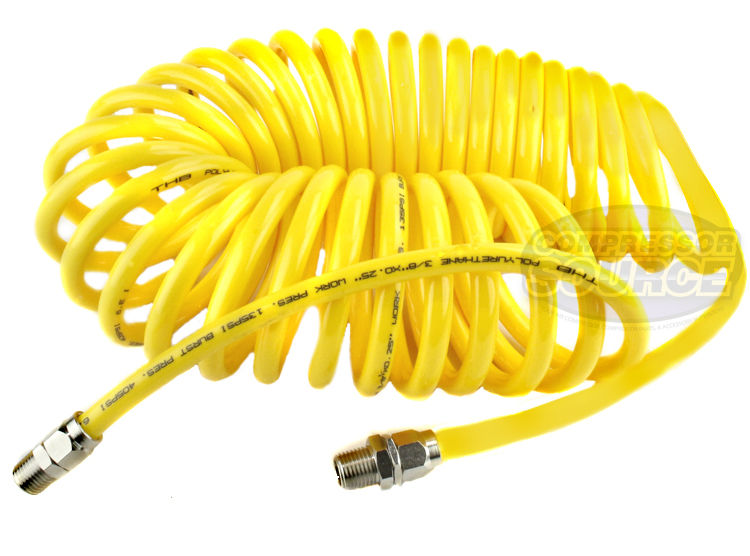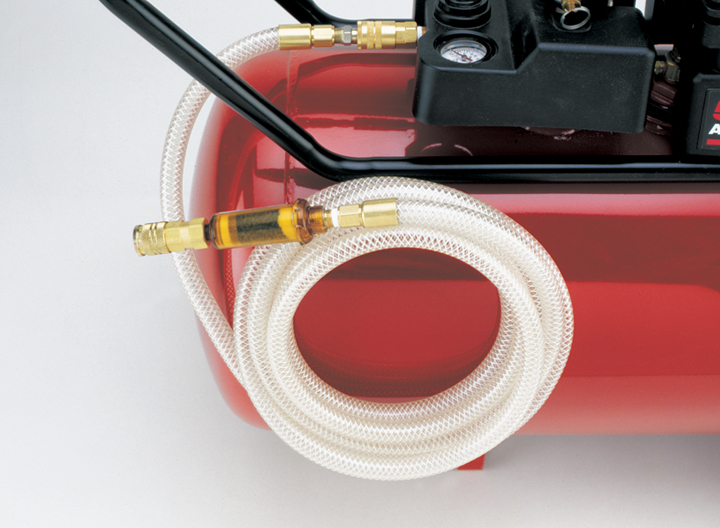If you work with air compressors, you know how important the right hose can be. Your air compressor hose is more than just a connector—it controls the flow, pressure, and safety of your entire setup.
Choosing the wrong hose could slow you down, cause leaks, or even damage your equipment. But don’t worry—this guide will help you understand exactly what to look for. By the end, you’ll feel confident selecting the perfect air compressor hose that fits your needs and keeps your projects running smoothly.
Ready to make your work easier and more efficient? Let’s dive in.

Credit: www.amazon.com
Choosing The Right Hose
Choosing the right air compressor hose is important for safety and performance. The wrong hose can cause leaks or bursts. It also affects how well your tools work. Pick a hose that fits your needs and matches your air compressor.
Material Types
Air compressor hoses come in many materials. Rubber hoses are strong and flexible. They resist kinks and last long. PVC hoses are light and cheaper. They are good for light work. Hybrid hoses mix rubber and PVC. They balance strength and weight. Choose a material that suits your job and environment.
Length And Diameter
Length affects how far you can reach. Too short limits your movement. Too long reduces air pressure. Diameter controls air flow. Bigger diameter means more air flow. Smaller diameter fits tighter spaces. Match length and diameter to your tools and workspace.
Pressure Ratings
Pressure rating shows how much air pressure a hose can handle. Check the rating matches your compressor’s output. Using a hose with low pressure rating is dangerous. It can burst under high pressure. Always pick a hose with a higher or equal rating than your compressor.

Credit: compressor-source.com
Proper Installation Techniques
Proper installation of air compressor hoses ensures safety and long hose life. It helps keep air flow steady. Correct techniques reduce wear and tear on hoses and fittings. This section covers key steps for good installation.
Avoiding Kinks And Twists
Kinks block air flow and damage hoses. Always straighten hoses before use. Avoid sharp bends or tight loops. Make gentle curves to keep air moving freely. Check hoses regularly for twists during work. Twisted hoses weaken over time and can cause leaks.
Secure Connections
Loose fittings cause air leaks and pressure drops. Tighten all connections firmly but do not overtighten. Use the right size fittings for each hose. Check connections before starting the compressor. Replace worn or damaged connectors quickly to prevent failures.
Optimal Routing
Plan hose paths to avoid hazards and obstacles. Keep hoses away from sharp edges and hot surfaces. Use hose reels or holders to keep hoses off the floor. This prevents tripping and hose damage. Proper routing keeps the workspace safe and hoses working well.
Maintenance And Care
Proper maintenance and care extend the life of air compressor hoses. Neglect can cause leaks or bursts, leading to costly repairs. Regular attention helps keep hoses safe and efficient. Simple steps prevent damage and ensure steady air flow.
Regular Inspections
Check hoses daily for cracks, cuts, or bulges. Look for loose fittings or connections. Replace hoses with visible damage immediately. Early detection avoids accidents and downtime.
Cleaning Methods
Wipe hoses with a damp cloth to remove dirt. Avoid harsh chemicals that can weaken the material. Use mild soap if needed, then rinse with water. Dry hoses thoroughly before storing.
Storage Tips
Store hoses in a cool, dry place away from direct sunlight. Coil hoses loosely to prevent kinks or twists. Avoid placing heavy objects on top of hoses. Proper storage keeps hoses flexible and ready to use.

Credit: premiumconwin.com
Common Issues And Fixes
Air compressor hoses face many common problems. These issues can reduce air flow and damage tools. Knowing the signs helps keep your system running well. Fixing problems early saves time and money. Below are some usual issues and how to fix them.
Leaks And Repairs
Leaks are the most common issue in air compressor hoses. They cause low pressure and waste air. Check hoses regularly for holes or cracks. Small leaks can be fixed with tape or sealant. For bigger leaks, replace the damaged section or hose. Always turn off the compressor before repair.
Wear And Tear Signs
Hoses wear out from constant use and bending. Look for cracks, bulges, or soft spots on the hose. Hoses may feel stiff or brittle over time. These signs show the hose is weak and might break soon. Inspect hoses before each use to spot wear early.
Replacing Worn Hoses
Replace hoses that show heavy wear or damage. Use the right size and type for your compressor. Cut the old hose cleanly and attach the new hose securely. Test the new hose for leaks and proper air flow. Proper replacement keeps your compressor working safely.
Enhancing Performance
Enhancing the performance of air compressor hoses leads to better work results. Proper handling and care extend hose life and keep air flow steady. Small changes make a big difference in efficiency and safety. Focus on key factors that improve hose use for any project.
Using Hose Reels
Hose reels keep hoses organized and untangled. They prevent kinks that reduce air flow. Using reels also protects hoses from dirt and damage. This makes work smoother and faster. Reels help keep the workspace clean and safe.
Temperature Considerations
Hose materials react to temperature changes. Too much heat can soften hoses and cause leaks. Cold can make hoses stiff and hard to move. Choose hoses designed for your work temperature. Store hoses away from direct sunlight and extreme cold.
Compatible Accessories
Use accessories that fit your hose size and type. Wrong fittings can cause air leaks and pressure loss. Check compatibility with connectors, couplers, and clamps. Quality accessories ensure a tight seal and stable air flow. This improves tool performance and saves energy.
Frequently Asked Questions
What Types Of Hoses Work Best For Air Compressors?
The best hoses for air compressors are durable and flexible. Common types include rubber, PVC, and hybrid hoses. Choose one with a high PSI rating and good abrasion resistance for safety and longevity.
How Do I Choose The Right Hose Size For My Compressor?
Select a hose diameter that matches your tool’s air requirements. Larger diameters offer better airflow but are less flexible. Typically, 3/8-inch or 1/2-inch hoses suit most air tools effectively.
How Can I Prevent Leaks In Air Compressor Hoses?
Check hose connections regularly and tighten fittings properly. Use thread seal tape on threaded joints. Replace worn or cracked hoses promptly to maintain efficient air pressure and avoid leaks.
What Maintenance Is Needed For Air Compressor Hoses?
Inspect hoses for cracks, wear, and leaks frequently. Keep them clean and dry to avoid damage. Store hoses coiled and off the ground to prevent kinks and extend lifespan.
Conclusion
Choosing the right air compressor hose makes a big difference. It keeps your tools working well and safe. Check the hose for damage often. Replace it if you see cracks or leaks. Use the right size and material for your needs.
Store hoses properly to avoid kinks and wear. Good care helps your air compressor last longer. Simple steps can save time and money. Keep your work smooth and efficient with the best hose.

